"Almost every way we make electricity today, except for the emerging renewables and nuclear, puts out CO2. And so, what we're going to have to do at a global scale, is create a new system. And so, we need energy miracles." -Bill Gates
Energy is one of the most important topics facing our modern, industrialized civilization. What sources we get it from, what we use it for, and how we deal with the waste from its production are paramount to the future of our species on Earth.
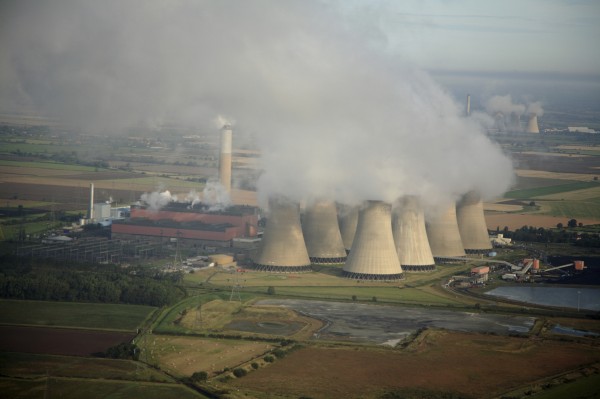
Yet in many ways, energy is one of the most poorly understood quantities in all of physics. To help you better understand it, let's take a look at five good questions about energy. Starting with...

1.) What is energy? Anyone who's ever taught or taken a course in introductory physics has likely encountered this question. Most physicists, perhaps unfortunately, define energy as the ability to do work. And so you go and ask what work is, and you get the circular definition that it's the transfer of energy from one source to another.
Maddening.
It's not like wikipedia does any better, mind you. But just because we don't have a good definition of it doesn't mean we can't quantify, test, and indirectly measure it.
Don't feel bad; no less a physicist than Newton had no concept of energy. And yet unlike Newton, I bet that you know it when you see it. Some things we do know about energy are:
- we know that all mass and matter contains it,
- we know how to quantify it,
- we know how much is stored electrically, chemically, thermally, sonically, etc.,
- we know how to convert it from one form to another,
- we know how to use it to accomplish things (i.e., to do work),
- we think it can never be created nor destroyed,
- and we can generate, calculate, and measure its various forms.
So let's take on a more useful question than asking for a simple dictionary definition:

2.) What can we do with energy? Well, we already said, "work," but that has a specific meaning to a physicist. If you "push" something, or otherwise apply a force to it, while it simultaneously moves in that direction, congratulations! That's what work is!
Whether you're lifting a weight up, pedaling a bicycle, driving a car, or spinning a turbine, work is being done. And that's what energy can do.

More than that, of course, is that you don't need to do it. Anything that lifts a weight, pedals a bike, drives a car, or spins a turbine can do work, and therefore, has energy. Atomic nuclei, molecular bonds, gravitation, relative motion of massive bodies and electromagnetism are all possible physical sources of energy, as nuclear power, fossil fuels, hydroelectric dams, wind power and solar power are respective examples of each.

3.) How much energy do we use? If you're reading this, you're probably in a location that has seemingly endless, cheap access to at least one of these forms of energy. Well, all total, humans use a lot of energy. In practice, it's much easier to measure power, or the rate at which we use energy. So take that power and multiply it by a certain amount of time, and you'll find out how much energy we use.
How much power do we use?
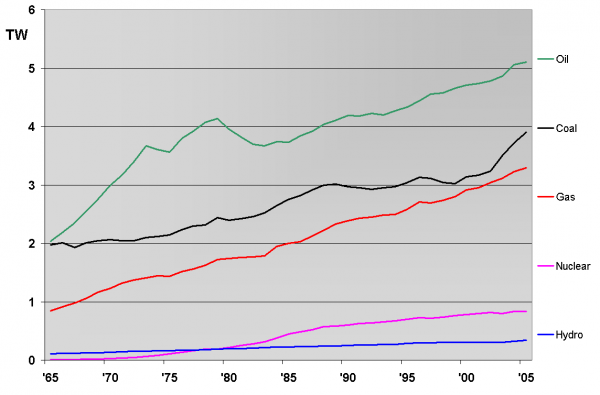
As of 2006, humans use 13 TeraWatts of power. That's a mind-boggling number, mind you. 13,000,000,000,000 Watts of power, or about one Watt for every dollar of the United States' GDP.
Except that's power, not energy. If we want to turn that into energy, we use 13,000,000,000,000 Joules of energy every second. Over the course of a year, that's 4 x 1020 Joules of energy. And we get most of it, as you can see, from oil, coal, and gas. We're basically using all the energy we can make, and demand is only going up. It would take some type of major advance to meet our energy needs from a better, safer, cleaner source than these.
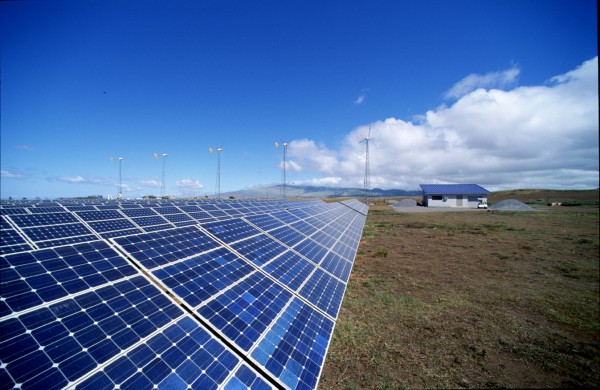
4.) What's the "holy grail" of energy? Well, you have to be careful here. Some people dream about taking all the ambient thermal energy around us and using it to meet our energy needs.

This only works if there's a difference in energy, heat, or temperature from one location to another. If you have the Earth, sitting pretty at 300 Kelvin, you can't do anything with that energy on Earth, because there's no way to make use of that energy, or to transfer it in a useful fashion.
What we'd love, of course, is a clean, non-polluting, abundant and easily controlled source of energy. The wind and the Sun are good options, but turning wind or sunlight/heat into usable energy are somewhat expensive and inefficient at this point. The "holy grail" of energy, as far as I'm concerned, is this.
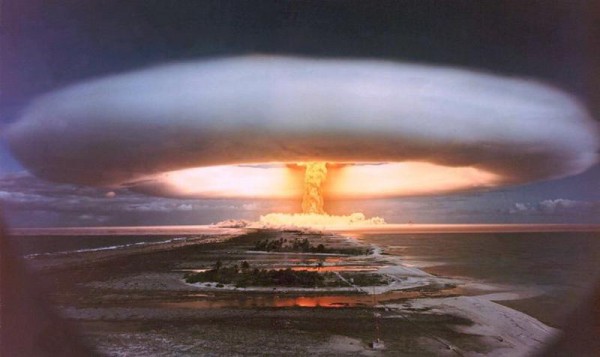
Nuclear fusion. Unlike current nuclear power, where rare, heavy, radioactive elements are split apart via nuclear fission, releasing energy and also producing radioactive waste, nuclear fusion takes something light, common and inoffensive, like hydrogen, and produces something equally inoffensive, like helium. The Sun operates off of nuclear fusion, as do our most powerful nuclear bombs.
The key, of course, is controlling it, and getting a fusion reaction to occur in a way that released more usable energy than you had to input to make the elements fuse together in the first place. Which brings us to the final good question...
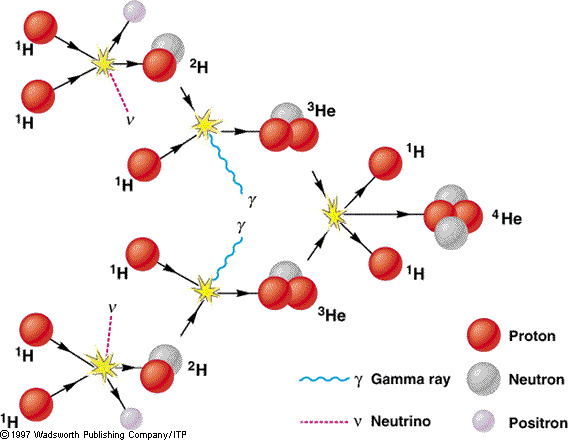
5.) What does the future hold for nuclear fusion? Well, we definitely don't want to do it the same way the Sun does it. But we still want to start with our cheap, light, easy fuel and get that nuclear energy out of it. And we've got three ways we know of to make it happen, each one getting closer to the magical (metaphorically) breakeven point. What are they?


Magnetic confinement fusion. Instead of lasers, why not use magnetic confinement of a hot plasma instead? Invented in the 1950s in the Soviet Union, Tokamak reactors can achieve nuclear fusion as well. For the past 30 years or so, Tokamaks and inertial confinement teams have swapped the record for getting ever closer to the breakeven point, though there's still a ways to go for both teams.
But recently, there's been a low-budget newcomer to the scene.

Michael Laberge, an independent physicist, is actually giving these huge collaborations a run for their money in the fusion game. Using a sort-of hybrid design, called magnetized target fusion, a low-density fuel source is heated into a plasma and confined magnetically. However, hundreds of pistons surround this plasma, and once the plasma is in the desired state, the pistons all fire at once, compressing the plasma and -- you guessed it -- causing nuclear fusion!
This, too, is still a significant ways away from the breakeven point, but all three of these designs hold the promise of being a new, efficient, clean energy source, and we can control it. (You will notice cold fusion is not on this list. That's because, by scientific standards, it is not yet verifiably successful.) So long as there's hydrogen -- the most abundant element in the Universe -- there's a chance for us to meet our energy needs through nuclear fusion.
And those are my takes on five good questions about energy!

You've obviously not heard of Andrea Rossi's Energy Catalyzer.
There would be more than enough energy, oil and food to go around, or even increase consumption.
IF there were fewer people.
The problem is, nobody wants to talk about that problem. Even mentioning the subject will make people accuse the speaker of "calling for genocide". People deludedly want to pretend that humans are exempt from consequences, that we can do what we want with impunity.
You can't have infinite growth on a planet with finite resources. All pyramid schemes are predicated on a fraud and eventually collapse. "Economies" are no different, and magic bullets don't exist.
Either humanity cuts back voluntarily in one or more areas - users or consumption - or the system will eventually implode, and probably destroy the planet while it happens.
.
The civilised world *has* cut back voluntarily - birth rates are completely sustainable.
Unfortunately, the uncivilised parts of the world still have runaway population growth and the excess spills over into the borders of civilised countries in the form of illegal immigration.
Our responses to the unsustainable growth in countries unable to support their population is ridiculously unconstructive - we send them food instead of helping them cut back their birth rates, and when they migrate illegally, we don't round them up and toss them back with anything like the vigour which is required.
I must admit, once upon a time, that basic "what is energy?" question led to about the closest I've ever come to being a crank. Back in elementary school, I think around 3rd or 4th grade, I noticed that the units for E=mc2 were all wrong, since energy was *obviously* the product of mass and velocity, right? Therefore, Einstein must have been wrong! Well, I kind of figured that if it were that badly off, somebody would have noticed by then, so I never published. ;)
Another interesting comparison that I find truly stunning: the 15+ terawatts of power that humans use is roughly one-third of the total geothermal heat flux of the planet, and two-thirds of that generated by natural radioactive decay processes in the entire volume of the Earth.
I think what people tend to forget is that humans are natural innovators. Needs must and when the time comes that we run out of fossil fuels and all the other nasty, harmful things that we use to make energy we will come up with another solution. I think it would be great if this could happen before the earth is damaged beyond repair and I think it will as it's not going to be too long until all those fossil fuels are gone
Let's not forget about Blacklight Power's hydrino reactor
Nuclear fusion research has already swallowed up and wasted far too much money from too many governments since the 1950s. The promise for better than 'break even' fusion was then, and firmly remains, fifty years in the future.
The nuclear fission reactor solution remains as the least polluting and the most environmentally friendly one. I would include thorium powered reactors in the mix.
I regard those who oppose that option because: 'OMG atomz' and advocate the installation of inefficient, high maintenance windmills everywhere as simply deranged.
Hey Ethan, I recall reading that fusion bombs only get about 1% of their energy directly from fusion. If I remember correctly the main purpose of the fusion phase is to provide neutrons to greatly boost the fission yield, meaning the vast majority of the energy still comes from dirty ol' fission. Is that true?
Re. thequiet at 9, I wonder if it would be practical to use the fast neutrons from a tokamak to break apart nuclei from actinides like thorium or U 238. Or get enough neutrons at the right energy levels to breed Pu 239 from U 238.
There is no question that we can produce unl;imited amounts of cheap electricity, safely and with almost zero pollution with currently available nuclear power (indeed France went 80% nuclear 40 years ago with technology available then.
A deeper look at the amount of nuclear produced on the graph shows that there was a geometrically rising rate which stopped about 1985 (roughly a 10 year lag between banning new reactors and ones already started being copmpleted).
Had that rising curve been continued most of our electricity (though not of all energy used) would now be inexpensive nuclear and we would be produceing more than twice as much of it. Since there is a close correlation between electricity use and GNP (eg in China both have grown 10% annually in an astonishingly close lockstep) the world would now be at least twice as wealthy and 10s of millions of lives would have been saved
Instead the western countries, though not the rest of the world, are reducing electricity supply and in recession.
All because of the scientifically illitere "Green" Luddites and their lying scare stories.
thequiet1:
No, that's not true at all. Take Czar Bomba for instance (the biggest fusion bomb ever detonated) which generated approximately 97% of its total energy from the fusion phase.
See
http://en.wikipedia.org/wiki/Tsar_Bomba
and
http://en.wikipedia.org/wiki/Teller%E2%80%93Ulam_design
@9
It just depends on the engineering. What you say was true of early designs, but as msironen states other designs employ more fusion.
Other notes:
1. Nuclear fission plants are only about 40% efficient. There is a lot of waste heat which does contribute to global warming. Plants with cooling towers (see first photo) generate a lot of water vapor, which is a greenhouse gas. Plants without cooling towers discharge into bodies of water and disrupt ecosystems.
2. Nuclear fusion as it is being attempted at most places involves deuterium-tritium fusion, not hydrogen-hydrogen. Tritium is radioactive and migrates very easily throughout the environment. It can migrate through stainless steel. There is an ultra-fine radioactive dust that originates from ion impacts onto plasma-facing components. This would spread very readily during an accident.
There is a reason no new nuclear fission plants have been built in the US in the last 20 years: capital costs are too high. Imagine yourself as CEO of an electric utility which needs to add capacity. Do you (a) spend $2-3 billion on a conventional plant that will be up and running in about five years or (b) spend $10 billion or more on a nuclear plant that, if you are lucky, will be up and running in a decade? If you don't like taking unnecessary bankruptcy risks (at least two US utilities went bankrupt in the 1980s due to construction costs for nuclear plants), then the correct answer is (a)--especially if you need to sell bonds to finance the construction, because you will get much more favorable terms for a plant that comes online sooner. Investors know that option (b) is a riskier investment, so they can and will demand higher rates as compensation for that risk. Even though the marginal cost of generating a kWh of electricity is lower with nuclear plants than with fossil fuels, the difference is not enough to offset the higher price of nuclear power plant construction over time scales of interest to investors. Environmental concerns about nuclear power are a convenient excuse for not building nuclear plants, but that's not why utilities aren't building nuclear power plants in the US. (In France and Japan, the lack of domestic fossil fuel sources makes nuclear power more economically attractive. The US, however, has plenty of coal and natural gas.)
I live about 20 miles from a nuclear plant (Seabrook, NH). As I am reminded every month, my electricity is not free, even though my provider (PSNH) is the company that owns that plant. On the contrary, our rates are among the highest in the lower 48 states, because PSNH is still amortizing the cost of building the Seabrook plant.
Even if we do hit breakeven for fusion power, it's going to run into the same problem.
In spite of all the naysayers (including those here in the comments), fusion definitely seems to be getting closer. Aren't they expecting to surpass break-even with the next designs, and significant (like, hundreds of megawatts) net generation immediately after that?
Fortunately, it needn't detract from ongoing solar and wind installations, or from efficiency gains like geoexchange heating/cooling systems. I personally believe this is the singular most important issue of our time, and I wish our governments would get half as serious as our scientists and engineers about solving it.
Maybe a couple of decades ago, I got quite excited by a different form of very cold fusion: muon-catalyzed fusion.
This process is not close to break-even, but a more efficient way of generating muons could change that almost instantly.
Don't most fusion reactors currently use deuterium and tritium, not plain hydrogen? And if I recall correctly, tritium is produced from lithium, which has only a limited supply. Granted, even with all our energy coming from fusion our lithium reserves are expected to last us a couple of thousand years or so, but to me that would still disqualify it as the "holy grail" of sustainable energy. Especially if we're going to need that lithium to put batteries in all of our cars.
"humans are natural innovators. Needs must and when the time comes that we run out of fossil fuels and all the other nasty, harmful things that we use to make energy we will come up with another solution."
Past performance is no guarantee of future success.
Yes, so far we always have thought of something, and we will probably think of something again. But assuming that we *certainly* will is a perverse sort of inversion of the Gambler's Fallacy.
http://en.wikipedia.org/wiki/Thorium#Thorium_as_a_nuclear_fuel
Thorium reactors will be the next big breakthrough, and there's a large enough supply on earth for about 1000 years of the entire world's energy needs. It's essentially a cheap, abundant, green energy source.
"and probably destroy the planet while it happens."
"before the earth is damaged beyond repair"
Just want to point out that we [i]can't[/i] destroy the earth. We might destroy our civilizations and maybe our species, but the planet will keep on spinnin round the sun just as it has, no matter what we do. I don't think that we could ever destroy all the life on earth, even if we tried. And if we go extinct, nature will just shrug and say "maybe it wasn't such a good idea to let apes run the show, oh well."
@P Smith: Even if people only had 1 child each (a steady population decline due to people who don't have kids at all and accidents/disease killing off others), there would not be enough oil to last the next 2 generations (and likely not enough gas for the next 3 or 4). Coal will last longer but among the fossil fuels coal produces most pollution per ton. Thanks to the current population, new energy sources are a guaranteed necessity.
@Trololo: the only problem is, no one wants to invest in developing thorium reactors. The ancient fast breeder designs of reactors have their good sides too but for a variety of reasons the pressurized water reactors vastly outnumber other designs. The latest PWR design done in France (European Pressurized Reactor) will absolutely dwarf any other reactor on the planet and thanks to economics any other reactor design will have to compete with the EPR.
@thequiet1: That depends on the specific bomb design.
@Vince#3: all those 'uncivilized' people you complain about are not the folks consuming the bulk of power (nor are they uncivilized). As most Arizonans from the 80's would have told you: you're an idiot. Unfortunately the idiots seem to have won over Az and according to polls about 70% of them fear the "brown threat". I can't believe my home state had gone so backwards in the 30 years I've been away.
Construction is underway for ITERs magnetic confinement tokamak fusion confinement research facilities;
http://www.iter.org/gallery/com_image_download
ITERs "Seven partners â the European Union, China, India, Japan, Russia, South Korea and the United States â have teamed up on an experiment to produce 500 MW of fusion power (from 50 MW input) in 500 second (bursts).. by 2020."
The $30 billion fusion reactor in France plans to deliver production level power by 2019 and put that "fusion power into the grid as early as 2040."
"Europe is paying 45% of the ITER construction costs, while the other participants (China, India, Japan, South Korea, Russia and the USA) are paying 9% each."
As well, "fusion research facilities more modern than anything in the United States are either under construction or operating in China, Germany, Japan and South Korea."
e.g. "In December 2010, the Chinese Domestic Agency (CN-DA) awarded the contract for the manufacture of ITER Correction Coils to ASIPP (Hefei, China), who had been closely involved in the construction of the EAST Tokamak in China and in R&D activities for ITER magnets. ASIPP is now actively preparing the installation of the manufacturing line for these coils in a dedicated building in Hefei."
The US spent $20 Billion (current US dollars) on the Manhattan Project, $100 Billion (current US dollars) to land a man on the moon.
The European Union spent $10 Billion to date on CERN's LHC.
The US defunded its Superconducting Super Collider.
Unlike the ants, if humans are to survive; we need to learn scientifically, morally and eco-nomically (which is just the human subset or eco-logy), artisically.
I'm a bit cynical right now; so I'll leave the optimistic conclusion to you today.
@11: France, like the U.S., hasn't solved the nuclear waste issue yet.
@15 ... there's a reason for skepticism; we've heard this about fusion power for 40 or more years.
@17 ... yes, or else helium 3, hence the (ridiculous, at this point) push to "mine" the moon for He-3.
Eric 14 the reason why nuclear plants take 10 years to build and cost $6 bn and counting is because of the "environmental"£ movemenmt. The Westinghouse AP 1000 is available off the shelf for $1.8 bn (as low as $1 bn in volume) and it can be built in 3 years (& is being in China).
Check out the massive real terms increase in nuclear costs when the normal trend for high tech is down http://www.phyast.pitt.edu/~blc/book/chapter9.html
About 90% of the cost of your electricity bill is government and Luddite parasitism.
How about
"Energy is the conserved quantity associated with the symmetry of physical laws under displacement in time"
as a definition of energy? I'll agree that this isn't very helpful at an introductory level, but it's surely better than nothing!
(I've never liked the "Energy is the ability to do work" definition, because it seems to ignore heat.)
"Energy is the conserved quantity associated with the symmetry of physical laws under displacement in time"
That has the advantage of at least being evocative. Energy seems like time, in that it can be measured and used but resists being defined in a satisfying way. If energy is defined by way of "work," does energy mean force put to work, either in fact or potentially? Like, gravity is a force, but a waterfall has energy?
The Chinese have just recently commissioned a small 4th generation fast-breeder nuclear fission power plant outside of Beijing.
James Hensen has pointed out that the current 2nd and 3rd generation nuclear fission plants only use about 1% of the energy available in the fuel ( a lot of energy is left in the radioactivity of the waste spent fuel, which then has to be stored for hundreds of thousands of years, a problem which hasnt been solved).
The fast-breeder plants promise to be much more efficient, producing radioactive waste, which has to be stored for hundreds of years, the problem being certainly more feasible.
America could have fast-breeder plants now, but the program was cancelled in 1994 by Clinton/Gore.
Actually, there's plenty of energy available. The Earth receives 6,000 times as much energy from the Sun as humans currently use. If only we could work out a way of tapping even a fraction of that ...
In recent years I have, with great reluctance, become a fusion skeptic, and not just because it always seems to be thirty years away. One of the nails in the coffin for me was realizing just how much fusion does not solve the problem of radioactive waste.
I hope I'm wrong, but in the meantime... solar or bust.
Cold (muon catalyzed) fusion works, it's just not a practical an energy source at this point... putting it in the same category as the rest of the techniques.
Conventional fission plants certainly work. They have produced 20% of the world's electricity for over 40 years.
You can object to them on idealogical grounds but if something has worked it is possible for it to work.
And renewables have produced more than 20% of the world's electricity in the last year and are increasing.
And after 40 years of use, nuclear fission is still hugely unsafe, it's always "the next version will be safe! Promise!".
"the reason why nuclear plants take 10 years to build and cost $6 bn and counting is because of the "environmental"£ movemenmt."
The reason why the Norwegian reactor is behind schedule and over budget is because the safety installed was crap. Once the reactor starts being built, the "environmental movement" doesn't add any time and their protest adds naff all cost, especially since the loan isn't made until the go-ahead is made.
At A-Level Physics level it's good enough to define energy as "The capability to cause motion". Only Kinetic Energy then is real :-) Everything else --- gravitational, elastic, chemical --- is just potential.
planning consulting:
I highly recommend Jared Diamond's book, "Collapse: How Societies Choose to Fail or Succeed" (link).
Briefly, if humans are such natural innovators, why didn't that save the Easter Islanders, the Mayans, the Anasazi Indians and the Norse colonists of Greenland? Diamond describes how overexploited their environment, destroyed the systems that sustained them and went extinct. The book is extremely sobering reading. Especially if you live in Australia.
Fusion may be the future, but it's still in the distant future. It's been described as 50 years away for about... 50 years. The closest we've achieved to break-even is 70% of input power (JET). ITER, which has been under development for 27 years, might produce 10x input power when it is finished in 2019.
We know how to do fission now; in fact we are doing fission. It's proven and established. It's the cheapest, fastest path to carbon-free energy.
Directly, nuclear displaces coal and if energy is cheap enough, we can manufacture liquid fuels to replace oil.
I agree, nuclear can be done better. I prefer LFTR over PWR's but either is better than coal and oil.
I like science
Rigs is a very useful website I am using it for my science project
Useful website
Nice job... Focusing on how best we can meet energy needs. Still want to read about "what energy really is?" Visit: http://www.geeksterritory.com/2017/03/energy-conservational-law-potenti…